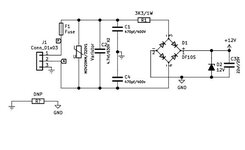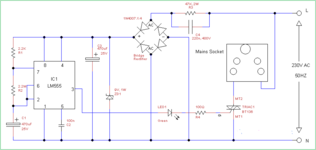jishnuprakash
Junior Member level 2
while going through the circuit i saw that in this circuit neutral is connected to ground,
what kind of problem can this cause?, is this a normal procedure?, should i be using Bridge rectifier for better reliability

what kind of problem can this cause?, is this a normal procedure?, should i be using Bridge rectifier for better reliability

